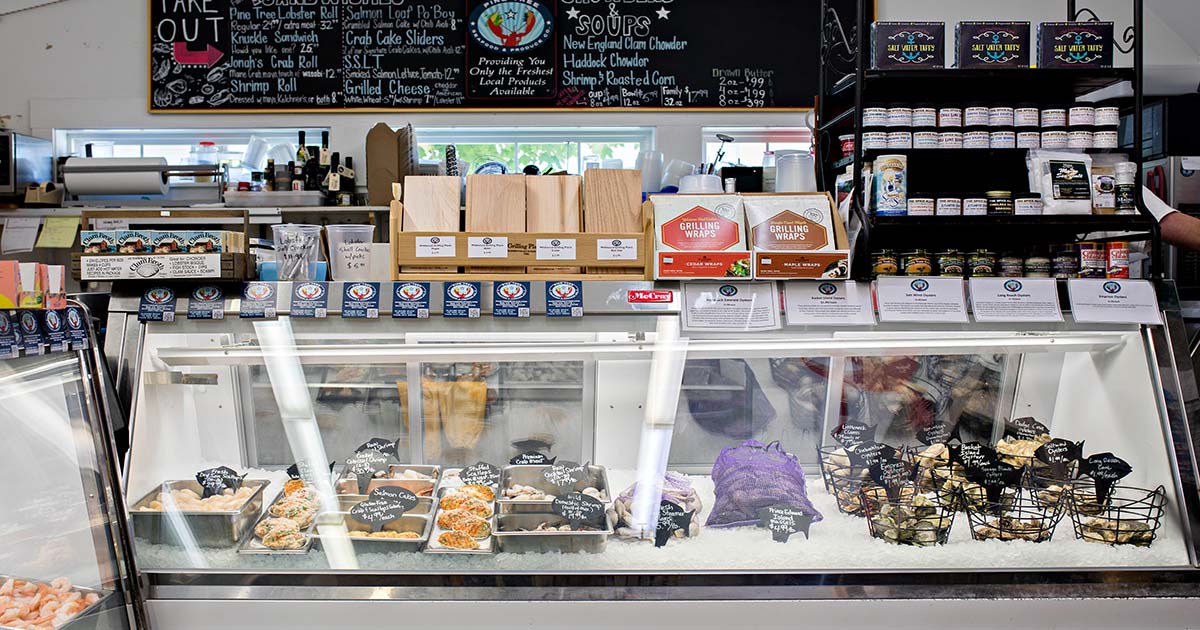Decoding Packaged Fish Labels: Understanding the Origin, Production, and Sustainability
When you browse the seafood section at your local grocery store, you’re faced with a variety of packaged fish, each with its own unique label containing important information.
These labels play a crucial role in helping you make informed choices about the fish you buy. In this post, we’ll delve into the significance of these labels and explore key aspects like the fish’s origin, farming methods, sustainability, and the risks of fish fraud or fish mislabeling. Please note that the information provided in this post is generally applicable, but specific regulations and labeling practices may vary by country.
WHAT DO FISH LABELS MEAN & WHY DO THEY MATTER?
Country of Origin
One of the most important pieces of information on fish labels is the country of origin. This detail helps you understand where the fish was sourced and provides insights into the region’s potential quality standards, fishing practices, and environmental regulations.
Wild-Caught or Farm-Raised
Another essential distinction you will find on fish labels is whether the fish is wild-caught or farm-raised. This differentiation is crucial in assessing its environment impact, nutritional content, and potential exposure to contaminants.
Demystifying Farm-Raised Fish
If the Fish is Farm-Raised
Labels should provide information about the farming methods used when the fish is farm-raised. These methods can vary significantly and have a direct impact on the sustainability and environmental implications of fish farming. Standard farm-raising techniques include open net pens, contained tanks, or ponds.
- Open net pens: Fish raised in available net pens are cultivated in underwater cages or enclosures within natural bodies of water. While this method is cost-effective, it can lead to concerns such as pollution, disease transfer, and the escape of farmed fish into the wild.
- Contained tanks or ponds: Fish raised in contained tanks or ponds are reared in closed systems that minimize environmental impact. These systems offer more control over water quality, waste management, and disease prevention.
If the Fish is Wild-Caught
Regarding wild-caught fish, the label might not always provide explicit information about the fishing methods used. In such cases, additional research or seeking out relevant certifications can help you assess the sustainability of the catch.
Different fishing methods can have varying impacts on the environment. Some methods — like long lines — may unintentionally catch non-targeted species (bycatch). Sustainable fishing practices focus on minimizing bycatch and overall environmental impact while ensuring the long-term health of fish populations.
Evaluating Populations and Sustainability
Determining the health and abundance of fish populations is crucial in making sustainable seafood choices. Smaller, fast-growing fish tend to be more resilient to fishing pressure, while larger, slow-growing species are often more vulnerable to overfishing.
While fish labels may not always explicitly state the population status of the fish, you can look for sustainable seafood certifications from reputable organizations like the Marine Stewardship Council (MSC) or the Aquaculture Stewardship Council (ASC). These labels indicate that the fish comes from well-managed, abundant populations.
Seeking Eco-Friendly Alternatives
In addition to understanding the sustainability of a specific fish species, it’s worthwhile to explore eco-friendly alternatives. Some species may be overfished or face environmental concerns, so finding sustainable substitutes is essential. Organizations like Seafood Watch offer guides and apps that provide valuable information on making environmentally friendly seafood choices.
Avoiding Fish Fraud
Fish fraud, where a different species is intentionally mislabeled, is unfortunately a significant issue in the seafood industry. Certain fish, like red snapper, wild salmon, and grouper, are particularly vulnerable to mislabeling.
To reduce the risk, look for reputable suppliers and certifications that validate the accuracy of the species claimed on the label. Additionally, familiarize yourself with the characteristics of the fish you plan to buy to identify any potential discrepancies.
Understanding the labels on packaged fish empowers you to make well-informed decisions. By considering factors such as the fish’s origin, farming or fishing methods, sustainability, and the risk of mislabeling, you can align your choices with your values and contribute to the preservation of our oceans and their diverse ecosystems.
Don’t forget to seek out additional resources, certifications, and sustainable seafood guides to enhance your knowledge and make responsible choices when purchasing fish.
Ready to explore the bounty of fresh-caught Maine seafood? Order today or come into our Scarborough, Maine location to purchase fresh caught seafood.

